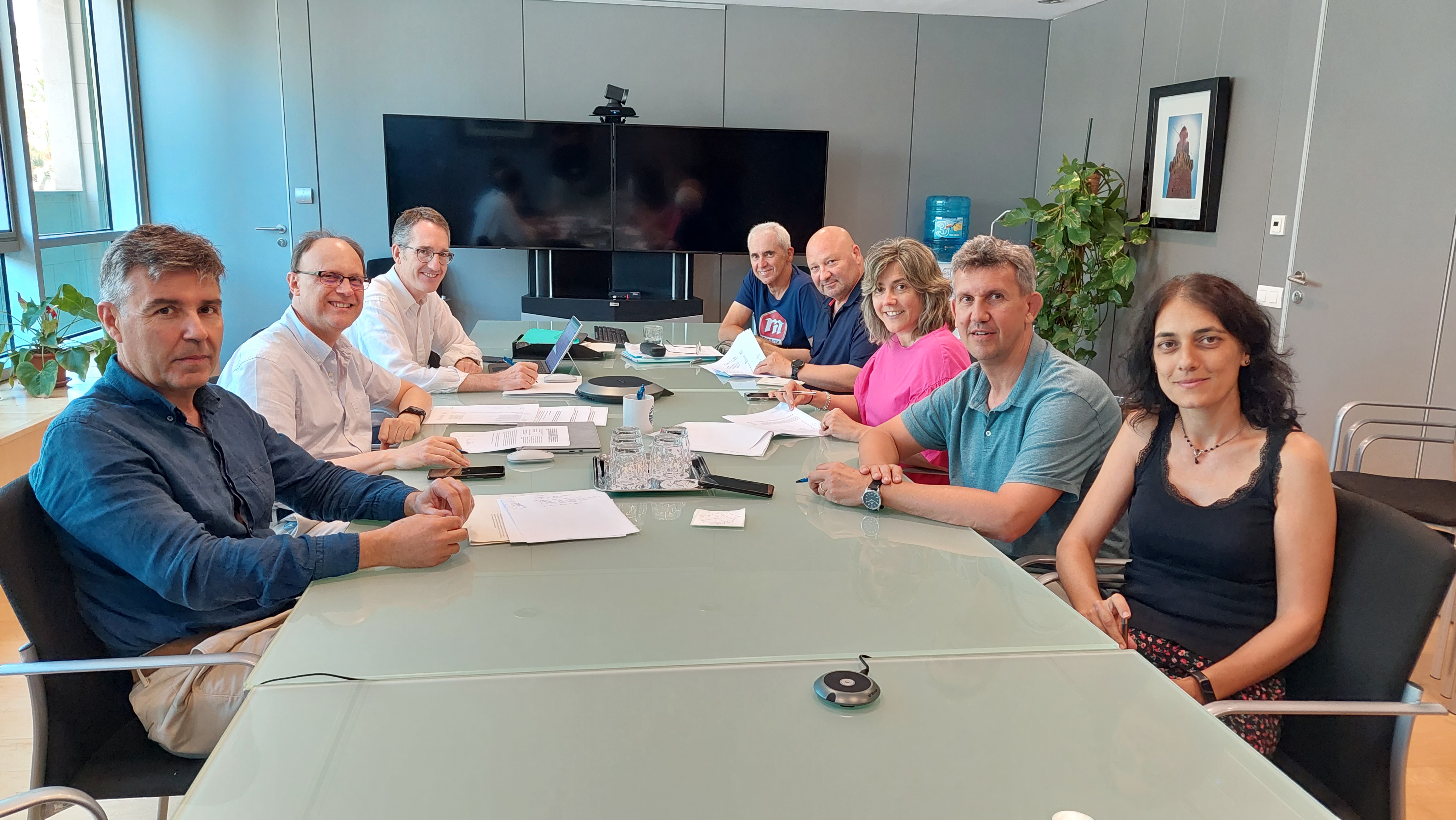

Socio-economic development


The executive of the Port Authority of the Balearic Islands (APB) has reached an agreement today with the signatory unions to the III Collective Bargaining Agreement for State-Owned Ports and Port Authorities (specifically, CCOO and UGT) regarding the skills and professional development plan for 2020, 2021 and 2022. As a result, almost 375,000euros of funds will be injected each year in order to boost the base salaries of around 260workers who form part of the port organisation. This agreement involves the creation of 50jobs, to be filled by internal promotion, and measures to increase the skills of a further 245roles. The two parties, who together formed the Local Committee for Skills Management (CLGC), signed the agreement today during a meeting at the headquarters of the APB in the Port of Palma. The chair of the APB, Jaume Colom, who has followed the negotiations for the agreement reached with the CLGC, voiced his appreciation for the efforts to reach a consensus made by the executive, the HR division, and the unions who signed the agreement. “It marks the beginning of a new stage for labour relations at the Port”, he said, as the APB will now have tools to enable the professional advancement of employees by developing their skills.
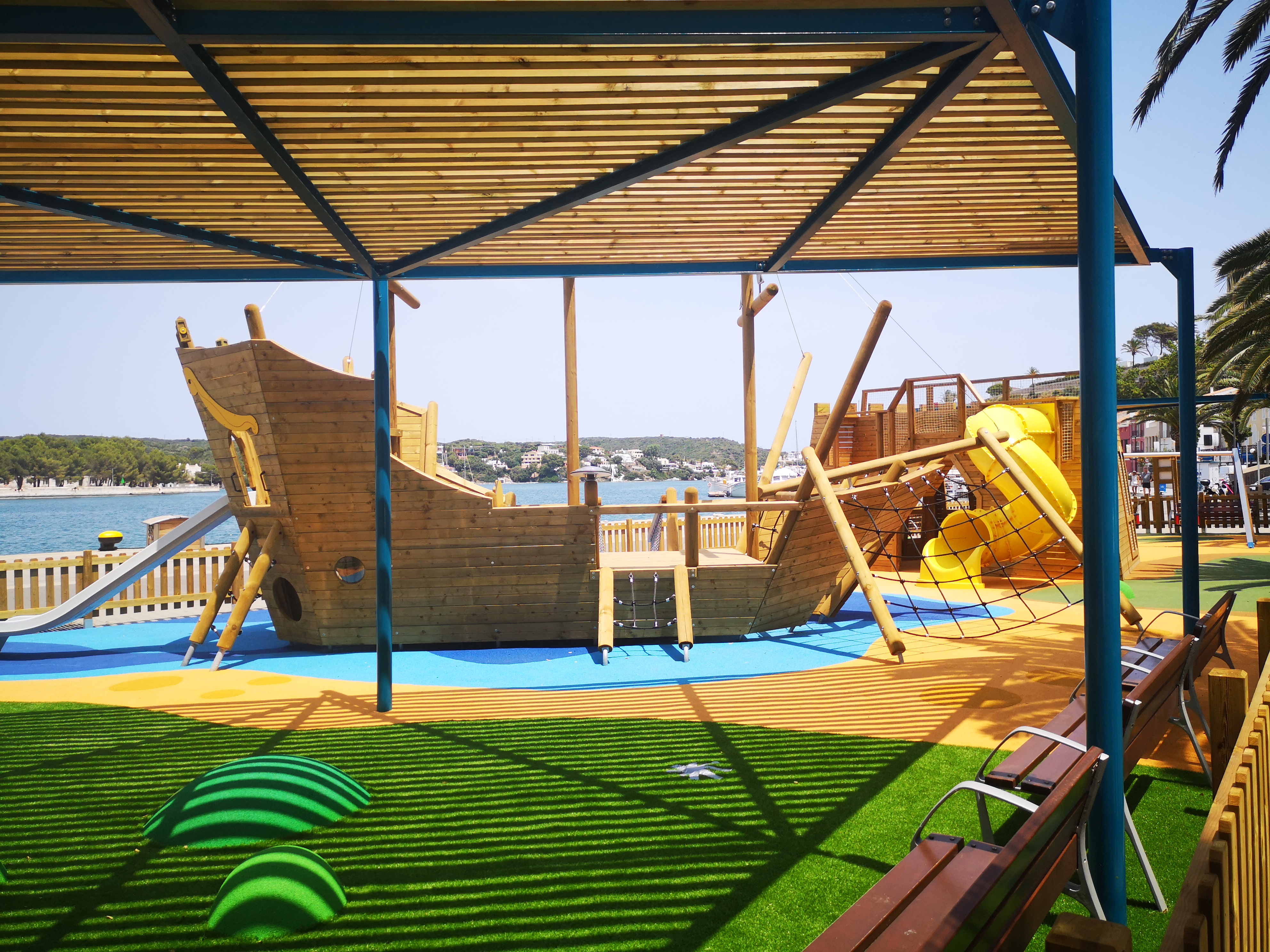
The Port Authority of the Balearic Islands (APB) has completed the installation of a children’s playground on the cruise ship quay in the port of Maó. The play area will be enclosed by fences and will have a safety floor. It has a marine theme, including a Santa Maria ship, whale and fish-shaped piers, a fortress tower and four activity panels. It is aimed at encouraging port-city interaction through social activities for all, at the same time as being compatible with port activity, both for local residents and port users. The work was carried out by the company M. Polo, for the sum of 362,667euros excluding VAT. Architectural barriers The work also includes the elimination of architectural barriers on pavements. Therefore, the pavements around the APB buildings in Maó have been remodelled in order to eliminate an existing step that extends the entire length of their central axis, in Moll de Ponent and Moll de Llevant streets. This is in line with the APB’s Corporate Social Responsibility policy, which includes the progressive elimination of architectural barriers to make them a safe place to suit the abilities of all users of the port’s infrastructures.
Work has been underway to relocate the Cladocora caespitosa colonies affected by the work on the pontoons for sports boats in Cala Corb since the beginning of June. The project, awarded to the company Tecnoambiente for 139,224.05euros, will allow work to resume on the new walkway that will connect Cala Corb with the d’en Pons quay, which is expected to begin in November. With this walkway, the two quays will be joined at a height of 1.2metres above mean sea level. In addition, the new walkway will be able to accommodate around 67small boats. The main objectives of this infrastructure are to optimise service conditions for sports boats, reduce the waiting list for directly managed moorings, and improve access and pedestrian circulation in the port of Maó. The project to build a pontoon for sports boats began in November 2018 and was awarded to the Copcisa / Construcciones Olives joint venture. In January 2020, as a result of the need to modify the initial project due to the stability of the embankments in the area, the Spanish Institute of Oceanography (IEO) was asked to draw up a report on the current state of the seabed in a section of the Cala Corb area. The conclusions of the report warned of the low probability of survival of a coral species endemic to the area, the Cladocora caespitosa, and recommended a project to restore its colonies in order to mitigate the impact caused by the work. Following the mandatory reports from the Directorate General for the Coast and the Sea and the Directorate General for Biodiversity, Forests and Desertification, the green light was given for the project to translocate this species, which is also present in other areas of the port, such as the southern part of the Isla del Rey, the passenger dock, the Cala Figuera inlet and Cala Fonduco. The receiving area is located at the northern end of Illa Plana, at the foot of a small cliff about 1.5metres above sea level and located at a distance of 600metres from the donor site. Endemic species The presence of the species Cladocora caespitosa in Menorca’s waters is well known. As an endemic species it is essential to protect and conserve it. There is evidence that this presence has been very important in ancient times, as indicated, for example, by the Holocene sites found under the es Grau lagoon-beach system. They are particularly vulnerable, as they have evolved under very specific environmental conditions and changes in their environment may lead to their extinction. Moreover, any change in their populations can alter the dynamics of other species with which they are directly or indirectly related.
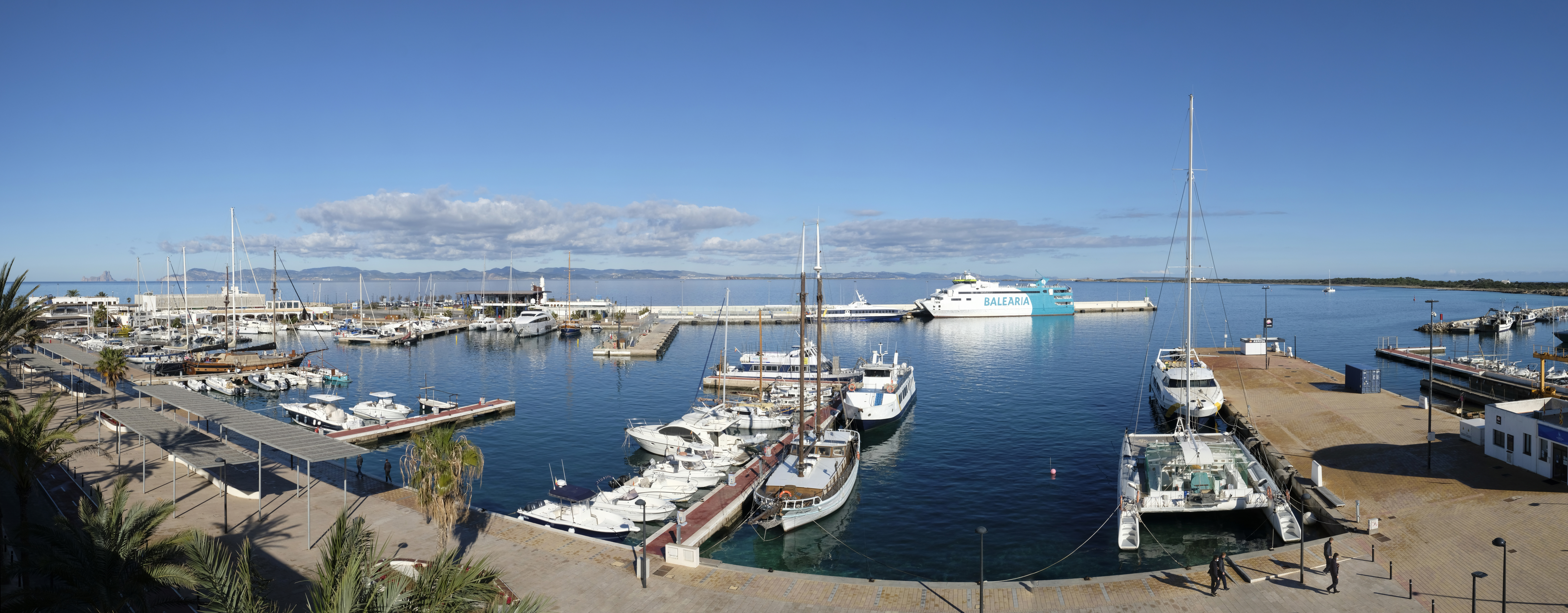
The Board of Directors of the Port Authority of the Balearic Islands (APB) has chosen as the best solution in the public tender for the management, under administrative authorisation, of a dry marina facility for small charter boats in the port of La Savina submitted by the company Puertos y Litorales Sostenibles, S.L. The 754.5square metre area of intervention has been put out to tender, of which 247.4square metres is water and 507.1square metres is land. The services to be provided include the hoisting and launching of boats, storage, surveillance and safeguarding of boats on land, as well as the supply of water and electricity to them. The annual amount of the occupation fee is 9,197.18euros and the activity fee, in accordance with Articles 187 and 188 of the State Ports Law, will be 4% of the turnover. The duration of the authorisation will be two years, as of the granting of the authorisation, with the possibility of a further one year extension. The provision of this service shall be compulsory for the authorised person during the high season (1 June to 30 September). The rest of the months will be optional. This new intervention is justified by the great demand in the port of La Savina for small charter boats of up to 7metres in length, due to the new anchoring restrictions imposed in S’Estany des Peix.
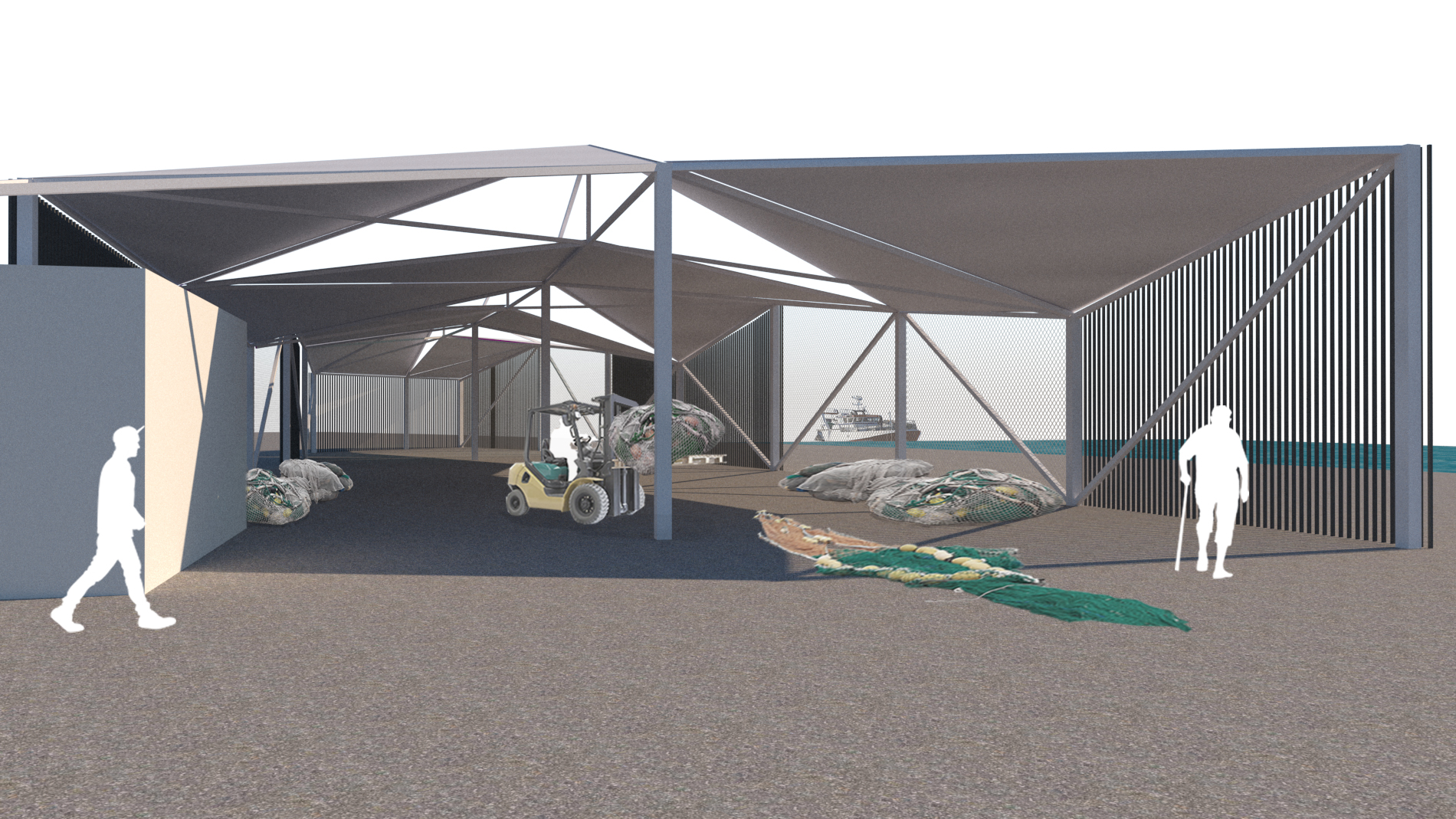
The Board of Directors of the Port Authority of the Balearic Islands (APB) agreed, in its last ordinary meeting, to directly grant an administrative concession to the Maó Fishermen’s Guild for the operation of the facilities for fishing activities located in the Poniente quay area of the port of Maó. The Cofradía proposes to use the areas and facilities intended mainly for professional fishing for additional services such as a net drying area, a storage area for boxes, tools, gear and effects, storerooms and premises, cold rooms, control room, and the provision of premises to a third party for the development of commercial fishing and the management of the building. They propose to build a pergola on the net drying area, with an investment budget of 158,000euros for the works and installations. The viability plan for the concession is for a period of 15years.
The Board of Directors of the Port Authority of the Balearic Islands (APB) has approved the specifications and clauses that will govern the public tender for the management of mooring places for charter boats at the Lonja dock in the port of Palma, which incorporates important mandatory environmental measures. The purpose of this tender is to select the most advantageous solution for the granting of an administrative concession for the management and operation of mooring places for charter boats with a total surface area of 18,288.60 square metres of port public domain. Of these, 16,721.9 square metres correspond to the water mirror and 1,566.6 to land. It includes two fixed pontoons, anchoring trains, mooring elements -bollards- and the existing service turrets. The specifications include important environmental improvements that the bidder must comply with, such as the obligatory selective removal of rubbish by installing the necessary containers (clean point). These containers must be monitored and must report the weight to the APB by means of an API. With this data, the licensee will provide the APB with information every six months on compliance with the removal of the different types of waste. The basic project to be submitted by the bidders must be designed to minimise possible negative environmental effects from the beginning of its conception, including the selection of materials, optimisation of energy efficiency and resources, waste management, emission control and sustainable management. Therefore, in the case of interventions that require construction or demolition works, sustainable certification must be obtained for the whole cycle of the work, which will be carried out with low-impact materials. Moreover, at least 70% of construction and demolition waste should be recycled. In addition, materials that facilitate the development of marine communities and the enhancement of biodiversity, such as regenerative facing boards to encourage the growth of flora and fauna in the area of operation, should be proposed in various areas. Energy saving measures The proposal for the installation of systems that minimise water consumption will also be assessed, such as automatic diffusers-blasters at the end of hoses for cleaning boats and also those for the collection, accumulation and/or generation of fresh water (mini-salinators, rainwater accumulators, etc.) that enable water consumption to be reduced. A study of the facility’s lighting will also be mandatory, with proposals for intervention, where appropriate, so that all areas of the facility are adequately and sufficiently illuminated, using technologies that optimise energy consumption. Whenever possible, solar panels will be installed on the car park pergolas for the production of renewable energy for consumption in the concession itself, and a sufficient number of connectors for electric boats will be guaranteed. Exclusive for charters The facilities covered by this tender will only provide service to Spanish vessels on list 6, as defined in Royal Decree 1027/1989, of 28 July, on flagging, registration of vessels and maritime registry, and to foreign vessels listed in the registration document as "commercial yachts", i.e. in any case to charter vessels, and the service may not be provided to any other registered in a different category. The maximum duration of the concession will be ten years, according to investment needs. The annual amount of the occupancy rate will be 269,339.53euros. In accordance with Articles 187 and 188 of the State Ports Law, the activity fee will be 4% of the turnover.
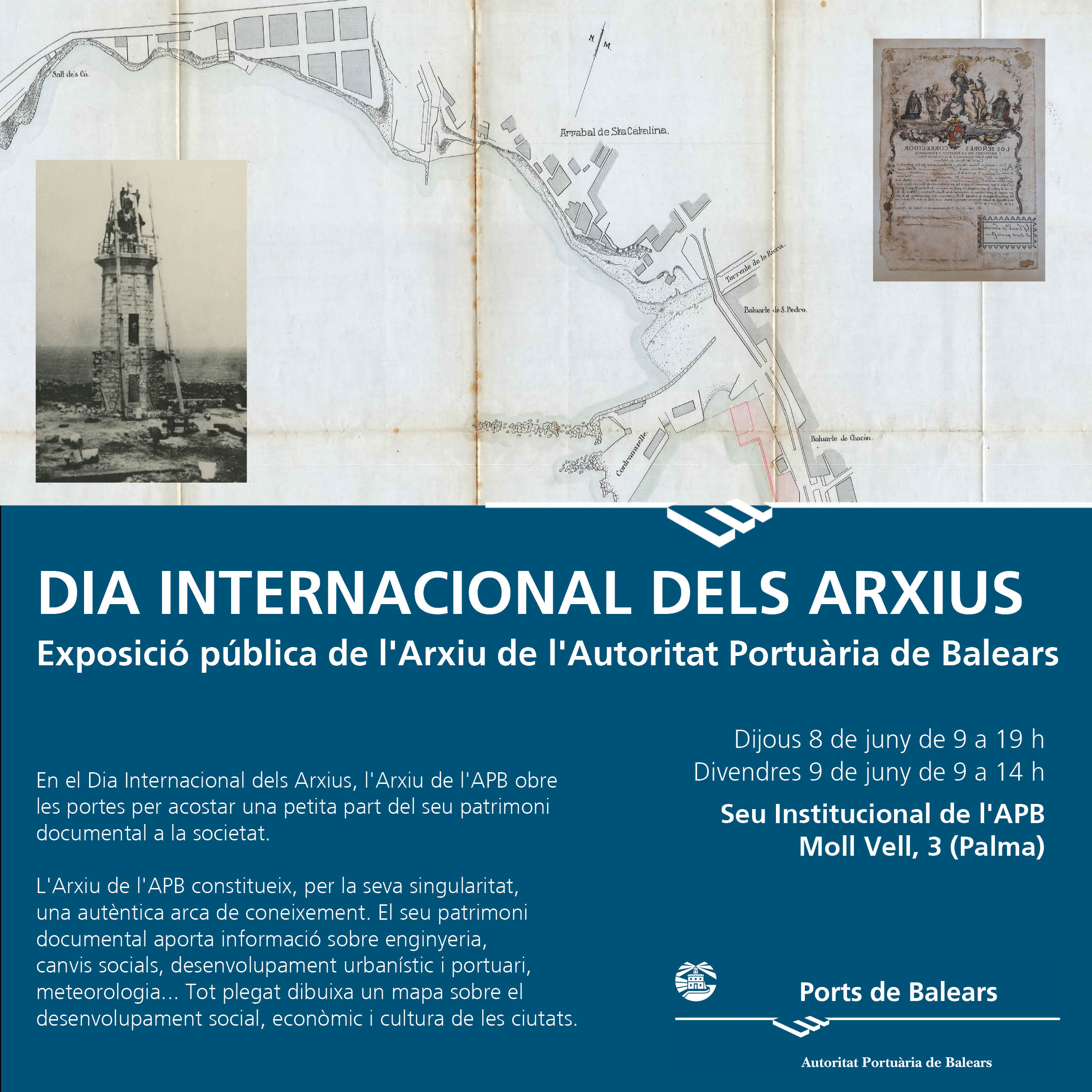
The Port Authority of the Balearic Islands (APB) brings to light the first Annual Report of the Board of the Port of Palma, a compilation of large-scale projects such as the construction of the Extension of the Old Dock and La Lonja dock in the Port of Palma, which is the main theme of the exhibition. The exhibition will be open to the public from Thursday 8th to Friday 9th of June at the Institutional Headquarters of the APB (Old Dock, 3). This report can be seen together with other exceptional elements such as the project for the installation of the emblematic Menorcan lighthouse of Punta Nati, or a monograph on the gardens of La Cuarentena, which is based on a unique document that will also be exhibited. The exhibition also includes other original projects for port works, period manuscripts and photographs. All these documents have been catalogued by the APB Archive, which continues its mission to bring a small part of its documentary heritage closer to society. International Archives Day Due to its uniqueness, the APB Archive is a true ark of knowledge. Its documentary heritage provides information on engineering, social changes, urban and port development, meteorology, economics, history, etc. All this outlines a map of the social, economic and cultural development of the cities. Ports are the most important pillars of an archipelago, and its city shapers. On the occasion of International Archives Day, on the 9th of June, the APB Archive is opening this exhibition, which will be located at the APB’s Institutional Headquarters on Palma’s Old Dock no. 3, from 9 am to 7 pm on Thursday 8th of June and from 9 am to 2 pm on Friday 9th.
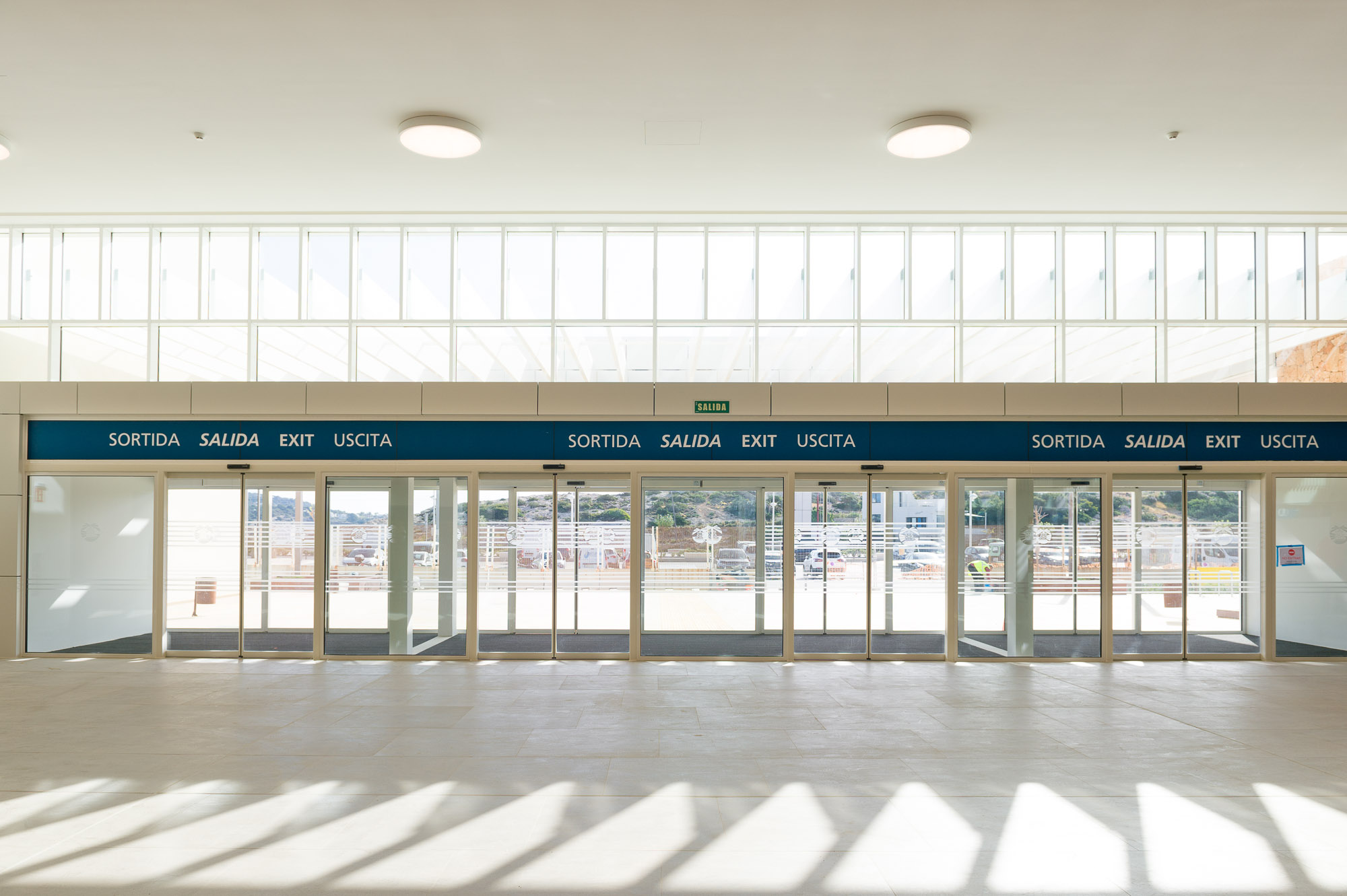
The Botafoc Maritime Station in the port of Eivissa will start functioning next Tuesday, 6 June, and will be fully operational to receive vessels entering or leaving Eivissa by sea. The first passengers to make use of the new facilities those from Baleària’s Eleanor Rosselvet ferry, which is scheduled to arrive at 7:15 p.m. from the port of Denia, bound for Barcelona. The president of the Port Authority of the Balearic Islands, Jaume Colom, values the construction of this infrastructure as “the ultimate work that we have been doing at the APB in the area of Port-Ciutat integration over the last twenty years” and which improves the use of the facilities for passengers, “who will be able to enjoy both the station and the magnificent views over Dalt Vila”. Agreed project The APB awarded the construction works for the new maritime station in April 2019 to the Comsa-MAB joint venture, for a budget of 16,330,960.06euros. The new building, which follows the tradition of Ibizan architecture using straight lines, and white and reddish-toned standstone, will offer all the services to meet the needs of passengers, with priority being given to compliance with safety and accessibility measures. It offers users spacious lounges and public areas that will allow for separate boarding and disembarkation. On the other hand, the Botafoc MS has all the amenities to guarantee the comfort of its passengers. It can also serve up to six ships at the same time. The new maritime station is located between the North and South pontoons of the Botafoc docks and is 30 metres away from the sea. It has an area of 6,580metres between the two floors and the mezzanine. The ground floor houses the pre-boarding services and security controls, while the mezzanine floor has offices. The upper floor is designed as a walkable roof that provides access to the gangways to board and disembark passengers. The final project for the new maritime station is based on the winning project of a competition for ideas that was judged by the Eivissa City Council, the Balearic Association of Maritime Activities Employers (APEAM), the Association of Architects, the Association of Civil Engineers of the Balearic Islands and the APB. Finally, the project tendered by the APB received a favourable report from the Urban Planning Department of the Eivissa City Council. This infrastructure completes the objective set out in the Infrastructure Master Plan for the port of Eivissa, which establishes the transfer to the Botafoc quays of the port operations that were most annoying for the city, such as the embarkation and disembarkation of goods and regular line passengers, resulting in the decongestion of the Llevant quay, now converted into the Marina promenade. de la Marina.
Yesterday, the Board of Directors of the Port Authority of the Balearic Islands (APB) approved the declaration of the APB’s commitment to the development of gender equality policies, which focuses on the importance and obligation to guarantee the real equality of women and men in organisational environments. Therefore, a Negotiating Committee has already been set up to work on the development of a document that will be instrumental in improving the working environment and optimising the capabilities and potential of the entire workforce. A plan that involves maintaining the conditions of effective equality of treatment and opportunities between women and men, strengthening it and, in turn, eliminating any type of discrimination on the grounds of race, sex, age or disability. Specifically in the field of employment, the main initiatives propose actions that favour women’s access to and promotion in employment and to improve the reconciliation of personal, work and family life. The Plan will be subject to negotiation and agreement with the legal representation of public employees and its compliance will be evaluated on an annual basis. It thus complies with the amendment of Royal Legislative Decree 5/2015, of 30 October, approving the revised text of the Basic Statute of the Public Employee Act, which urges public administrations, as employers and responsible for the implementation of public policies, to implement and promote the necessary actions in terms of organisation of their staff in order to comply with the gender equality principle. It also serves as a model and example to other public and private organisations, as well as to society as a whole. 1st Equality Plan On 6 July 2011, the APB, a body that forms part of Puertos del Estado and depends on MITMA, adhered to the 1st Equality Plan and the Protocol for the prevention and treatment of cases of Sexual and Gender-based Harassment of the Port Authorities. A step further has now been taken and work has already begun on the development of the 1st Equality Plan specific to this entity, which will give special coverage to Sustainable Development Goals (SDGs) 5, 8 and 10, as they specifically address the goal of achieving gender equality, within the framework of global respect for human rights and as integrated, inseparable elements and guarantors of the balance of the three dimensions of sustainable development: economic, social and environmental.
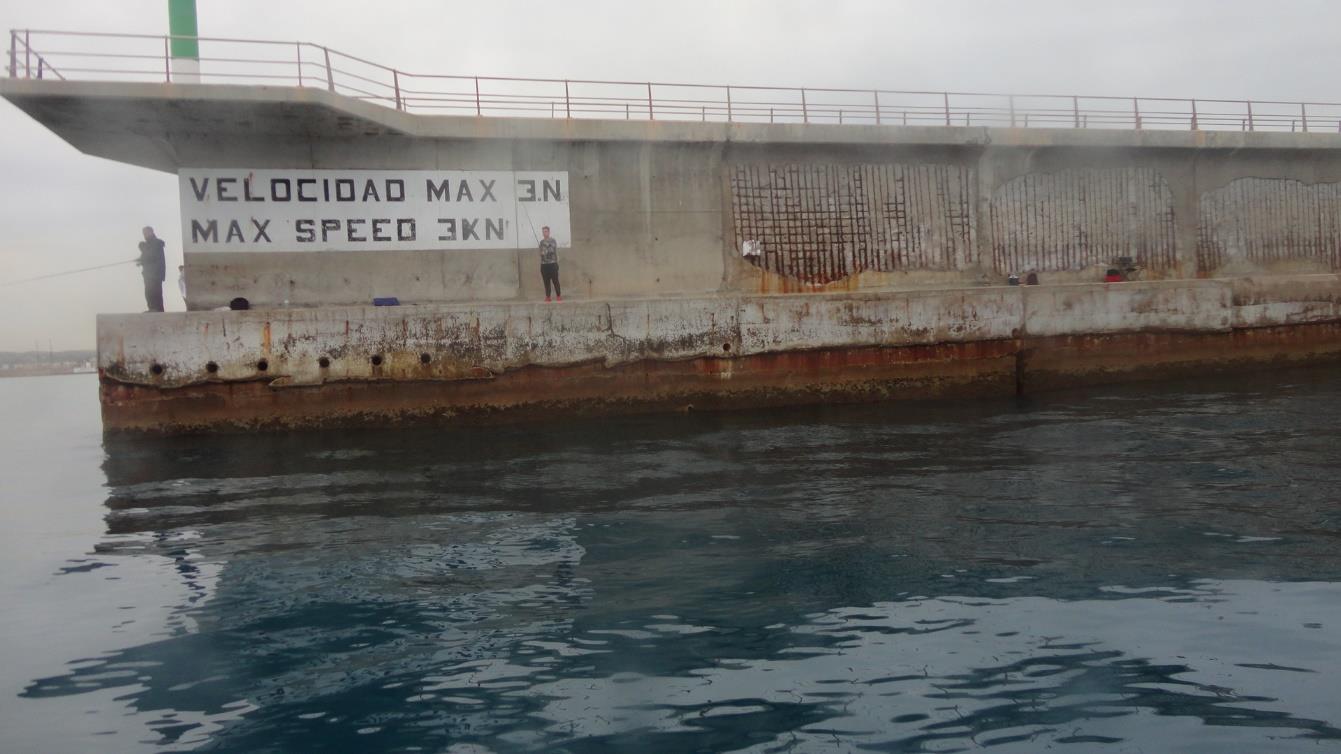
The rehabilitation of the protective elements of the Botafoc dock foundations, at the port of Eivissa, has begun. In the past few years, some damage to the main mantle of the dock bank had been detected and confirmed by the underwater inspections carried out as part of the APB’s five-yearly inspection programme. The objective of the project is the work carried out on the three sections of the dock (base, trunk and head) so that it is resistant to the current maritime climate, which may have changed since the original one was carried out. In the base section, the work consists of repositioning the 6-tonne blocks located at the current bank coping. 1.5 tonnes of rockfill will be dumped on this base to give continuity to the slope of the filter formed by the previous blocks. Finally, on top of the previous materials, a two-layer mantle made of 20-tonne blocks will be built on the slope. In the trunk and head section, repositioning of the current 3-tonne pieces is planned, on top of which a main mantle will be placed, which will be made of 20-tonne blocks. Due to the characteristics of the work and the volume of the pieces to be handled, it will be carried out by sea, with blocks manufactured on the mainland and transported by boat to the port of Eivissa, which will avoid affecting traffic and port operations on land. The contract was awarded to the joint venture between FCC Construcción and Vías y Obras Públicas (VOPSA) for 10,094,515 euros. The execution period is 28 months. Botafoc Dock The Botafoc dock, 515 metres long and with a maximum draught of 20 metres, has a submerged bank of cubic concrete blocks, formed by 12 concrete caissons. The crown wall with a waveguard is 7 metres above sea level. It is connected to the town by a 1,200metre-long road. This has increased safety, because the unloading of oil products can now be carried out at a greater distance than before the dock was built. This also allows large cruise ships to dock there.

The INEOS Britannia team, which is finalising its preparations in Palma for the 37th edition of the America’s Cup in 2024 in Barcelona, will extend its stay in Mallorca for three more years to prepare for future editions of the competition, as its leaders have told the Minister for the Economic Model, Tourism, Employment, Iago Negueruela, during a meeting held today in Palma. At the same time, the meeting, which was also attended by the Director General of Tourism, Isabel Vidal, and the President of the Port Authority of the Balearic Islands (APB), Jaume Colom, served to make progress on a protocol of intentions aimed at Mallorca becoming the permanent headquarters of Ineos Britannia in the future to prepare for the America’s Cup. During the meeting, the members of INEOS Britannia expressed their intention for Palma to become its permanent headquarters and praised the “magnificent port infrastructures, the port’s smooth connections with the main cities in Europe and the conditions offered by its bay throughout the year”. In addition, as a result of this commitment to Mallorca, they also expressed their willingness to open avenues of collaboration in training for staff linked to the maritime industry, which will further strengthen ties with the UK, and continue to focus on nautical training, as well as on the relationship with technology companies in Mallorca. After the meeting, Negueruela highlighted the interest shown by the team to extend their stay in Palma, which will serve to “continue to support nautical training and a complement to recreational boating” in the Balearic Islands. During the meeting, Jaume Colom for the APB showed his willingness to continue in the port of Palma as no details were presented of any location that might be compatible with the reorganisation of port activities planned for the coming years. INEOS’ CEO, Sir Ben Ainslie, declared that “Palma has been a great sailing training base for INEOS Britannia since we arrived on the island last summer. We have built strong relationships and feel the strong support of the local community”. “The possibility of establishing a sailing headquarters in Palma presents a great opportunity and we look forward to continuing to provide a platform that can increase jobs across the island,” he added. The INEOS Britannia team includes Mallorcans Miguel Sánchez Cuenca (physicist and meteorologist) and Elvira Llabrés (computer engineer).
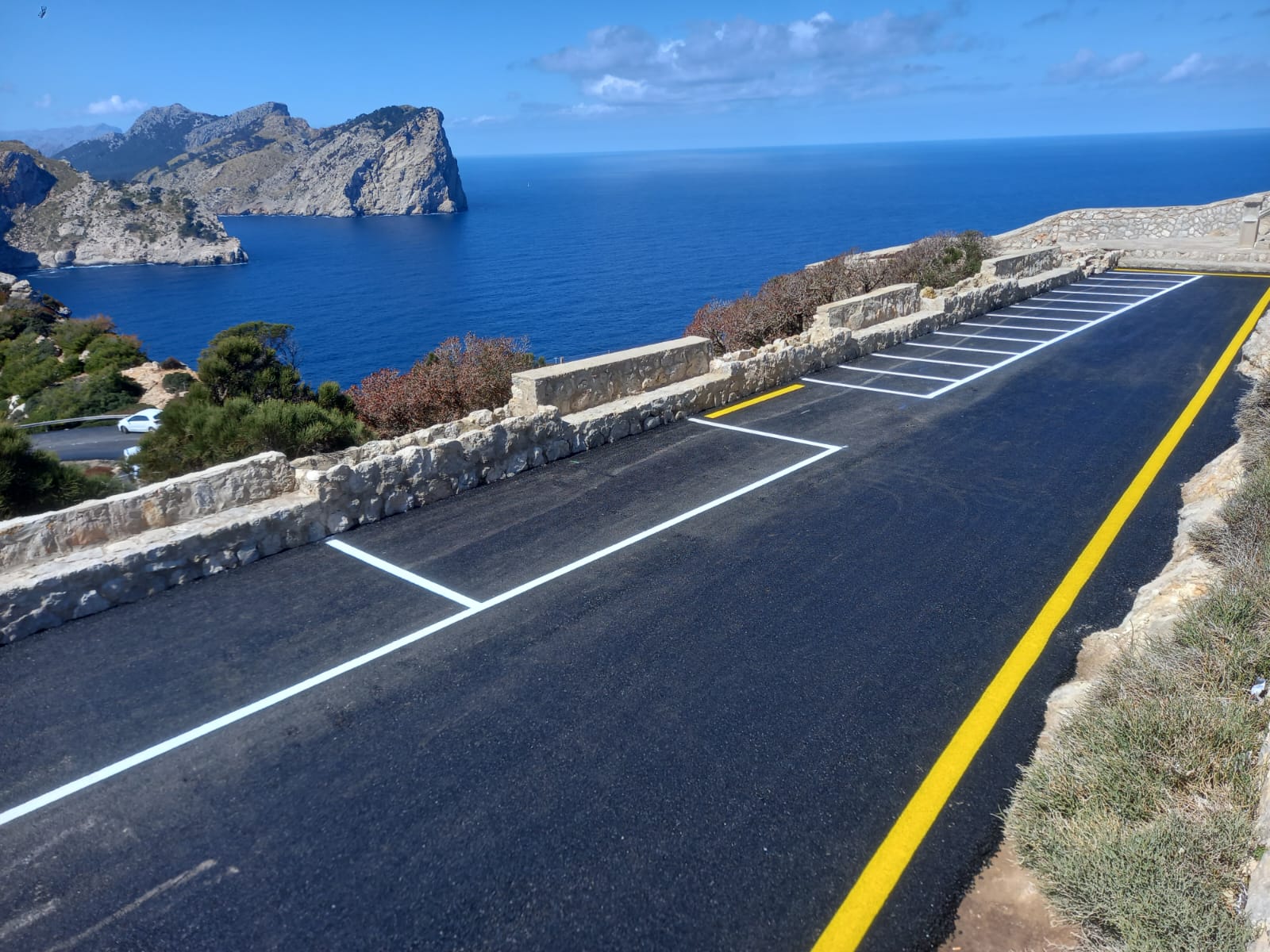
Today, the Port Authority of the Balearic Islands (APB) completed the work on the structural reinforcement of the earth retaining wall on the access road to the Formentor lighthouse. The access road to the lighthouse will be opened tomorrow to all traffic and people not involved in the work. On 22 June 2022, with the reinforcement work partially completed, the road was partially opened for reasons of public interest and the start of the tourist season. Last November, the road was once again closed to vehicle traffic in order to complete the lining of the retaining wall with a dry stone wall.

